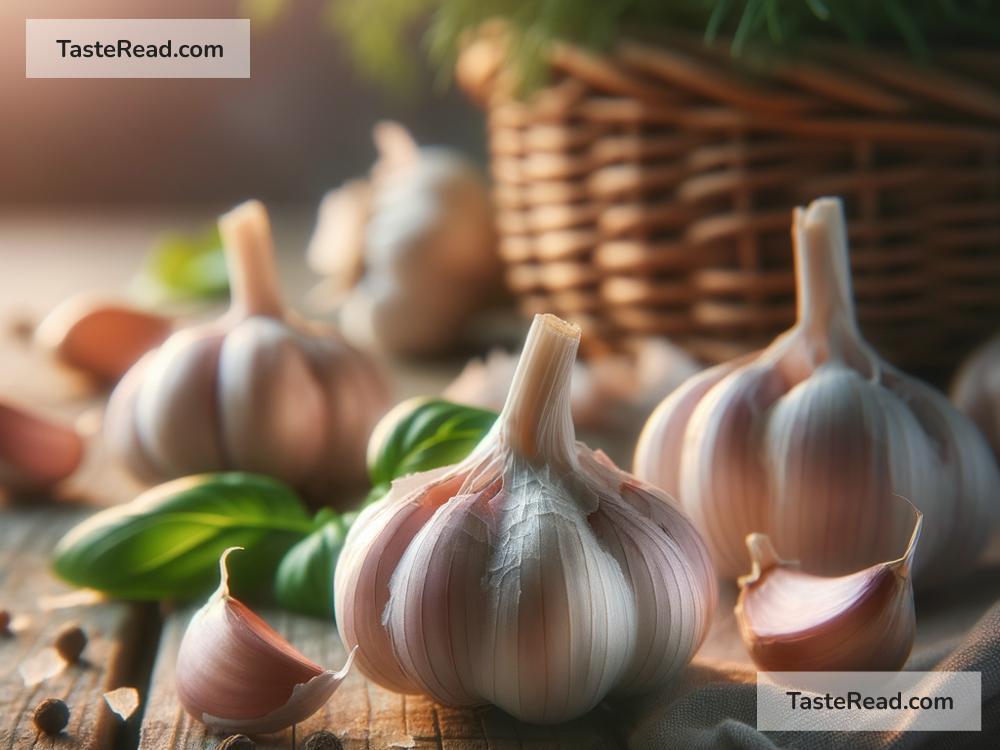Cooking with Naturally Pest-Resistant Garlic: A Beginner’s Guide
Garlic, with its pungent aroma and unmistakable flavor, is a cornerstone in kitchens around the globe. From Italian pasta and Chinese stir-fries to an essential ingredient in the classic French bouquet garni, garlic adds a depth of flavor that is incomparable. But did you know that besides its culinary uses, certain types of garlic are naturally pest-resistant? This makes them not only a cook’s favorite but also a gardener’s ally. Today, we’ll dive into the world of cooking with naturally pest-resistant garlic, sharing tips, recipes, and health benefits.
The Magic of Naturally Pest-Resistant Garlic
First off, it’s essential to understand what makes some garlic varieties naturally adept at fending off pests. These garlics have developed strong aromatic compounds as a survival mechanism, which, luckily for us, also contribute to their rich flavors. They’re a boon for organic gardeners who prefer not to use chemical pesticides. When you cook with these types of garlic, you’re embracing an age-old wisdom that marries the health of our bodies and our land.
Selecting the Right Garlic
When shopping for naturally pest-resistant garlic, you might encounter various types, from the robust ‘Russian Red’ to the milder ‘Persian Star’. Each comes with its unique flavor profile and degree of pungency. Experimenting with different types will enrich your cooking and allow you to discover which variety best suits your palate. Farmer’s markets or organic stores are excellent places to start your search, as they often feature a broader selection of garlic.
Preparing Pest-Resistant Garlic for Cooking
Before you let garlic work its magic in your dishes, you’ll need to prep it. Here’s how:
- Separate and Peel: First, separate the cloves from the bulb. Then, lightly crush the clove with the side of a knife to loosen the skin, making it easier to peel.
- Slice, Dice or Mince: Depending on your recipe, you might need your garlic sliced, diced, or minced. Remember, the smaller you cut your garlic, the more potent its flavor will be.
- Let It Sit: Here’s a little chef’s tip – after chopping your garlic, let it sit for about 10 minutes before cooking. This helps to activate its health-enhancing compounds.
Cooking with Garlic
The beauty of garlic lies in its versatility. It can be sautéed, roasted, used raw, or infused into oils. Here are some simple ways to incorporate pest-resistant garlic into your meals:
- Sautéed Garlic: Begin your dishes with a base of sautéed garlic to add a rich undertone. Simply cook it in a bit of oil or butter until it’s fragrant but not burnt.
- Roasted Garlic: Roasting garlic transforms it into a sweet, creamy delight. Slice off the top of a whole bulb, drizzle it with olive oil, wrap it in foil, and bake at 400°F (200°C) for 30-40 minutes.
- Garlic Infused Oil: Infuse olive oil with garlic to create a flavorful base for dressings and marinades. Just simmer a few cloves in oil over low heat for about 15 minutes, then strain and store.
Delicious Garlic-Forward Recipes to Try
- Garlic Parmesan Pasta: Cook your pasta, and while it’s still hot, toss it with minced garlic, olive oil, grated Parmesan, and freshly cracked black pepper for a quick and flavorful meal.
- Garlic Lemon Roast Chicken: Rub your chicken with a paste of minced garlic, lemon zest, salt, and rosemary. Roast until golden for a simple yet delicious meal.
- Garlic and Herb Bread: Mix softened butter with minced garlic, parsley, and a pinch of salt. Spread generously on a loaf of bread and bake until crispy for an irresistible side.
Health Benefits of Garlic
Besides tantalizing your taste buds, garlic is celebrated for its health benefits. It’s known to have antibacterial and antiviral properties, can boost heart health, and even reduce blood pressure with regular consumption. Cooking with pest-resistant garlic means you’re not only making your meals more delicious but healthier too.
Conclusion
Cooking with naturally pest-resistant garlic opens up a new chapter in your culinary adventure. It’s a testament to how choosing ingredients mindfully can lead to more flavorful, healthful, and sustainable dining experiences. Whether you’re an amateur cook or a seasoned chef, incorporating this versatile and robust ingredient into your cooking repertoire will surely elevate your dishes to the next level. Happy cooking!


